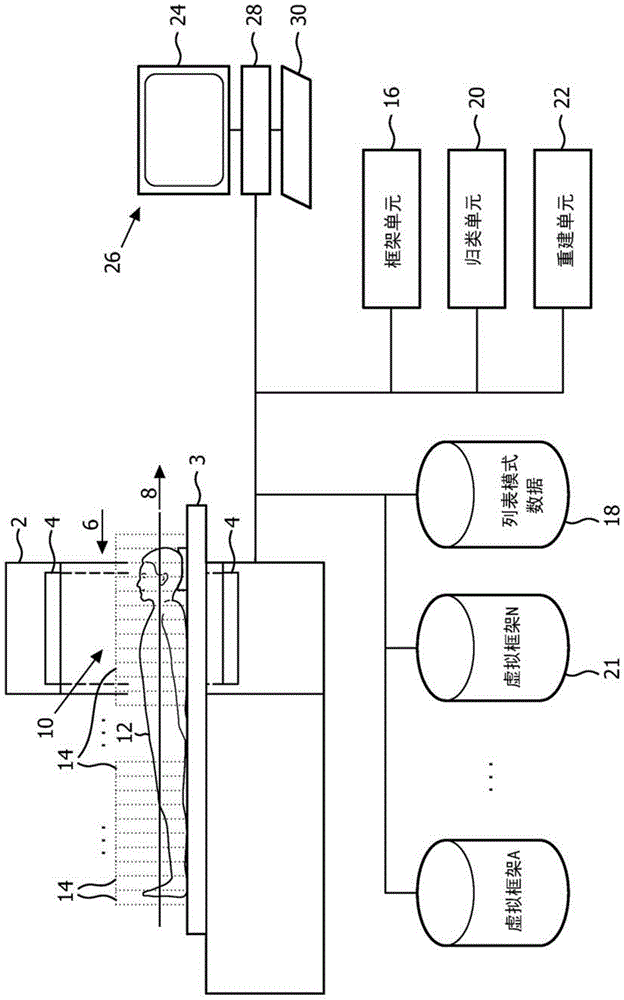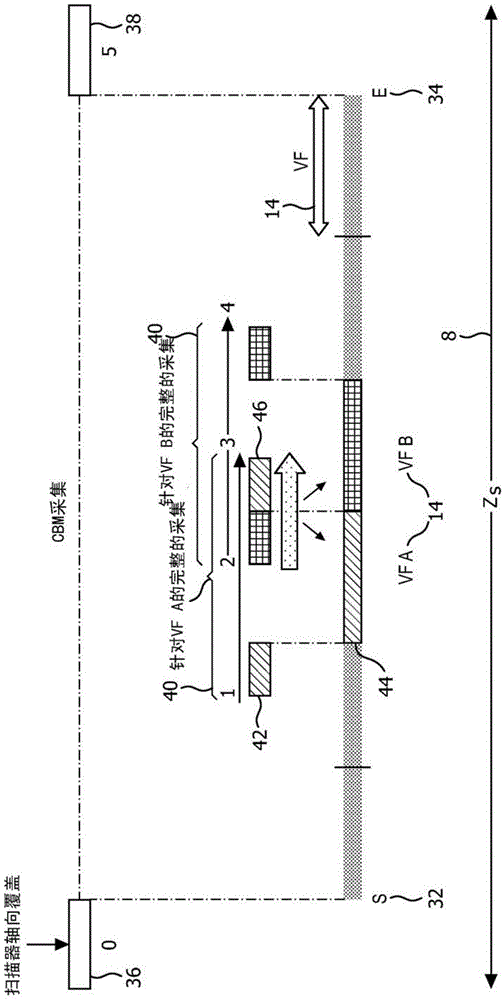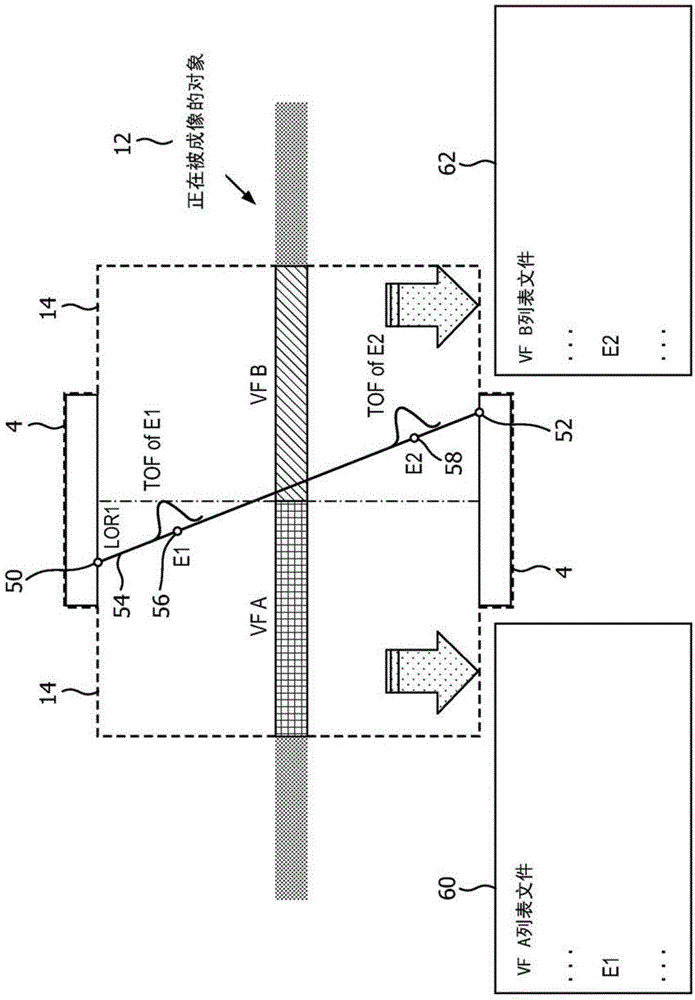Virtual frames for distributed list-mode time-of-flight reconstruction with continuous bed movement
A virtual frame and time-of-flight technology, applied in the field of medical imaging, can solve the problems of binning data into sinograms, increasing computing resource bottlenecks, workflow bottlenecks, etc., achieving uniform axial sensitivity profiles, improving patient comfort, and shortening scans delayed effect
- Summary
- Abstract
- Description
- Claims
- Application Information
AI Technical Summary
Problems solved by technology
Method used
Image
Examples
Embodiment Construction
[0022] refer to figure 1 , schematically illustrates an embodiment of CBM utilizing a virtual frame TOF-PET system (1). The system 1 includes a TOF-PET scanner 2 shown in cross-section. Non-TOF PETs are also contemplated. The scanner is configured with an object support or bed 3 that moves in continuous motion past a PET detector array 4 . The detector is arranged around an opening or bore 6 through which the object support is moved in an axial direction 8 . The arrangement of detectors 4 around the opening defines a field of view 10 . The object support 3 supports the object 12 to be injected with radiopharmaceutical. As the object support 3 moves through the field of view 10, the radiopharmaceutical decays as it is taken up by tissue and then eluted. When the radiopharmaceutical decays, a positron is emitted, which causes an annihilation event that emits a gamma photon as a coincident pair. Coincidence pairs of gamma photons from field of view 10 are detected by detect...
PUM
 Login to View More
Login to View More Abstract
Description
Claims
Application Information
 Login to View More
Login to View More - R&D
- Intellectual Property
- Life Sciences
- Materials
- Tech Scout
- Unparalleled Data Quality
- Higher Quality Content
- 60% Fewer Hallucinations
Browse by: Latest US Patents, China's latest patents, Technical Efficacy Thesaurus, Application Domain, Technology Topic, Popular Technical Reports.
© 2025 PatSnap. All rights reserved.Legal|Privacy policy|Modern Slavery Act Transparency Statement|Sitemap|About US| Contact US: help@patsnap.com



